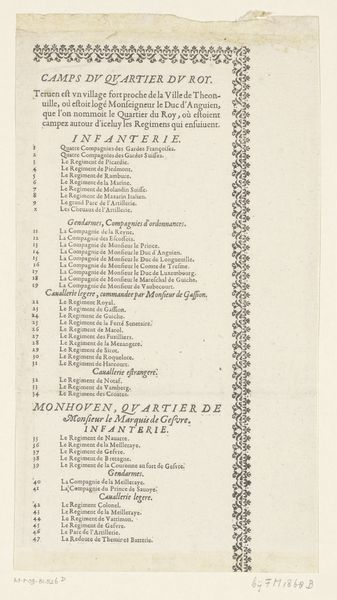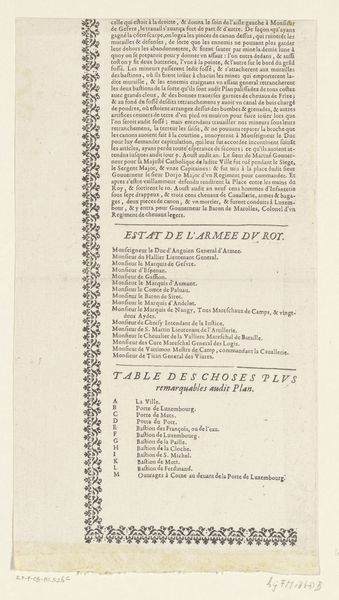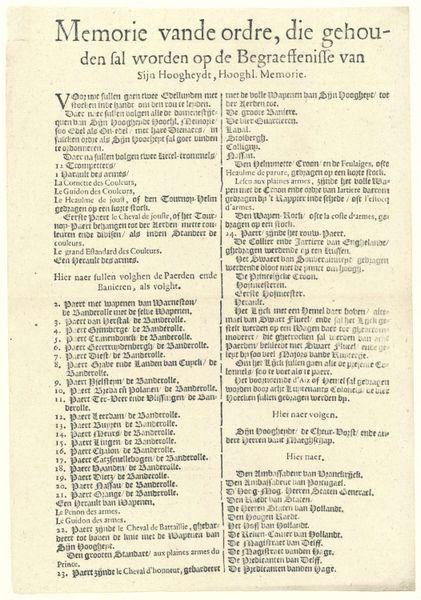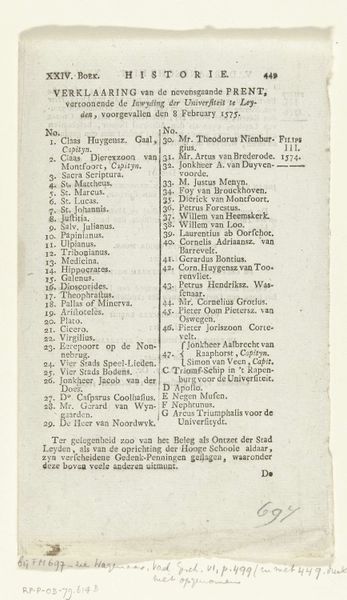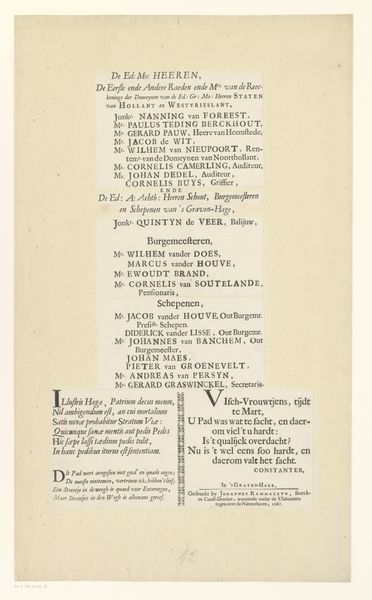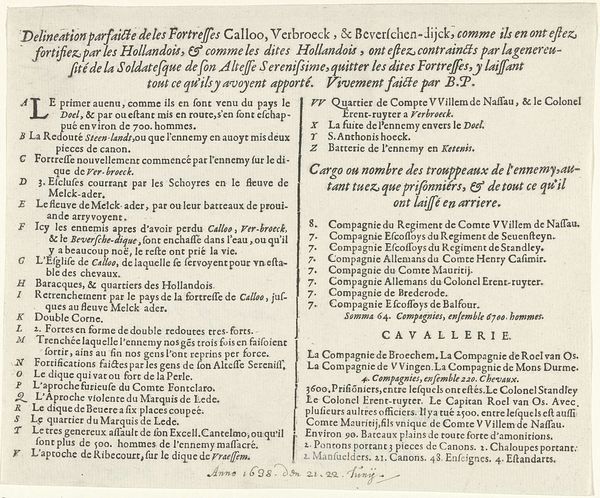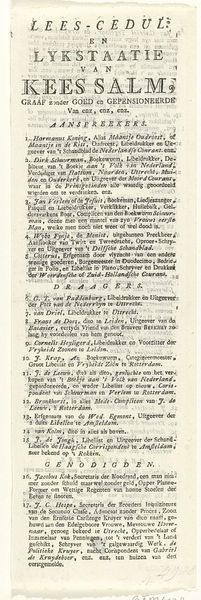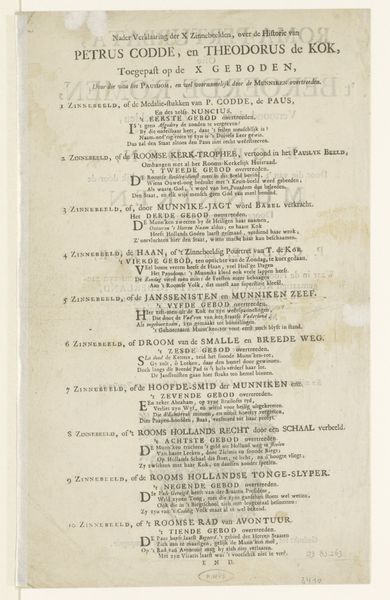
graphic-art, print, paper, typography
#
graphic-art
#
baroque
# print
#
paper
#
typography
Dimensions: height 337 mm, width 183 mm
Copyright: Rijks Museum: Open Domain
Curator: Today, we're looking at a text sheet titled "Tekstblad bij de kaart van het beleg van Thionville, 1643." It was printed in 1644, and we believe François Collignon was the artist. It's essentially a printed paper document detailing the siege. Editor: Immediately, I'm struck by the formality. It feels so official, like stumbling across bureaucratic documentation from centuries ago. The texture of the aged paper even comes through, despite being a digital image. It gives you a certain kind of weight, doesn't it? Curator: Indeed. This particular work exemplifies the dissemination of information during wartime in the Baroque era. The meticulously typeset lists and ornate borders signal a high degree of production, intended, perhaps, for those with authority or invested interest in the siege. Note the details of regiments and their leaders; these are very practical matters rendered with careful attention. Editor: Practical, but also imbued with a particular sense of pride, I think. It is strategic communication of sorts, made manifest in physical form. To hold something like this in your hands then would've been a form of tangible power and proximity to current events. The controlled space on the page contrasts with the chaos implied within the conflict. Curator: Exactly. We also see how printmaking allows for a controlled distribution of knowledge. The bottom details, 'Chez Nicolas Beray' suggests mass reproducibility and a certain degree of official sanction: “Avec Privilege du Roy”. These factors mark an important development of state authority through the printing press. Editor: That’s fascinating! It's amazing to think that something so seemingly functional and informational also acted as a sort of cultural marker of social capital. As an artist, I’m very taken with how materials like paper and ink contribute such value and weight. Curator: Agreed. Considering this, the "Tekstblad" reveals just how deeply intertwined art, craft, and power were in shaping public understanding of historical events. It bridges fine art's communicative function within society's laboring arms through meticulous print work. Editor: Looking at it now with fresh eyes, I sense the immense importance held within it; a beautiful snapshot of societal workings at play, all from such careful planning and skill within paper, typesetting, distribution, and more.
Comments
No comments
Be the first to comment and join the conversation on the ultimate creative platform.
